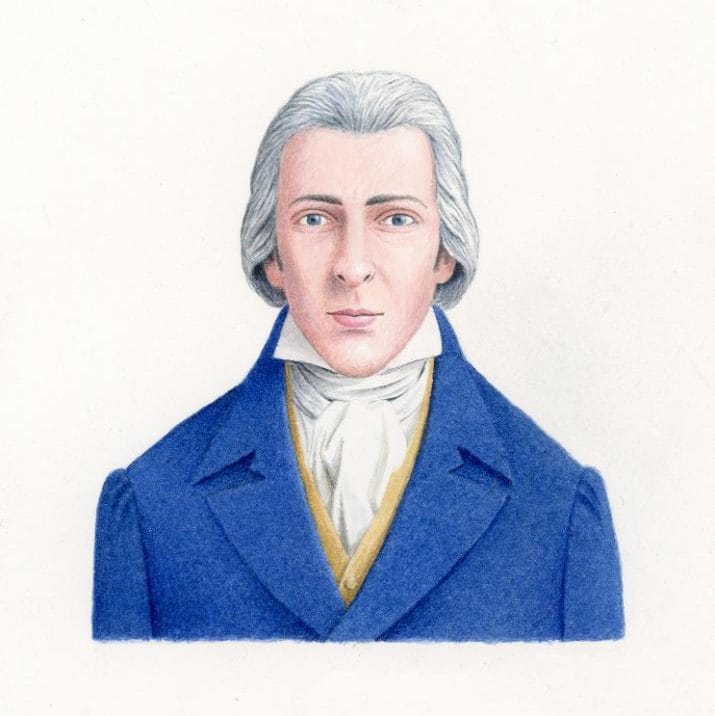
No Amount of "Research" Can Take Hot Mr. Darcy Away From Us
Only you know what he really looks like
Breaking news from England: Mr. Darcy was actually ugly. Or, at least he was by modern standards, suggest professors John Sutherland and Amanda Vickery. The two spent a month researching societal male beauty norms in Austen’s day, as well as possible models for Darcy in the author’s life, and have recently come up with what is being hailed as “the first historically accurate portrait of the celebrated English author’s fictional character.”
Vickery explained: “As Austen wrote Pride and Prejudice in the 1790s, our Mr Darcy portrayal reflects the male physique and common features at the time. Men sported powdered hair, had narrow jaws and muscular, defined legs were considered very attractive. A stark contrast to the chiselled, dark, brooding Colin Firth portrayal we associate the character with today.”
Their findings have been immortalized in an illustration by Nick Hardcastle, showing Mr. Darcy’s true, milquetoast face:
 UKTV/Nick Hardcastle
UKTV/Nick Hardcastle
Now, this is all very well and good, but it begs the question: is it actually possible to find out what a fictional character “really” looked like? I mean, we all know that Austen wasn’t actually thinking of Colin Firth when she wrote the book. She probably wasn’t thinking of anyone in particular. That’s the whole point of literature—readers get to participate in the text, and part of that participation is imagining the characters however they want. It’s only, it seems to me, the prevalence of film and television adaptations that have given us the strange impression that characters look a certain, absolute, way. Since it’s the reader who imagines the actual face, any reader in any era has access to the “real” Darcy. At any rate, this is the first description of Mr. Darcy in Pride and Prejudice:
Mr. Darcy soon drew the attention of the room by his fine, tall person, handsome features, noble mien, and the report which was in general circulation within five minutes after his entrance, of his having ten thousand a year. The gentlemen pronounced him to be a fine figure of a man, the ladies declared he was much handsomer than Mr. Bingley, and he was looked at with great admiration for about half the evening, till his manners gave a disgust which turned the tide of his popularity; for he was discovered to be proud; to be above his company, and above being pleased; and not all his large estate in Derbyshire could then save him from having a most forbidding, disagreeable countenance, and being unworthy to be compared with his friend.
That description—tall, handsome, and rich—sounds pretty timeless to me. (And he may or may not have been very handsome; after all, tater, Mrs. Reynolds says “I am sure I know none so handsome,” though of course she’s biased.) And hey, I’m sure some people would find a narrow jaw and thick legs super cute, even in the 21st century.
Anyway, not for nothing: it isn’t Darcy’s looks that make him so compelling, but rather his attitude, and his intelligence, and the whole man of mystery vibe. Plus he loves girls that read, so, you know.
Emily Temple
Emily Temple is the managing editor at Lit Hub. Her first novel, The Lightness, was published by William Morrow/HarperCollins in June 2020. You can buy it here.



















